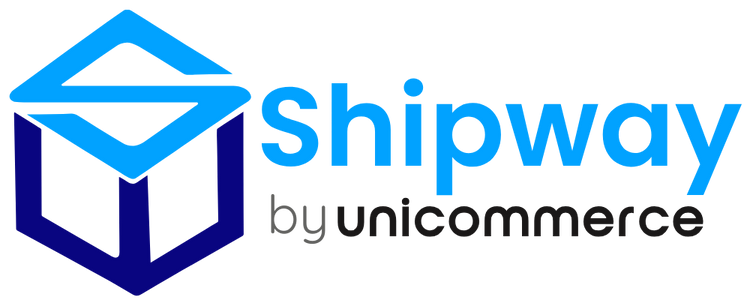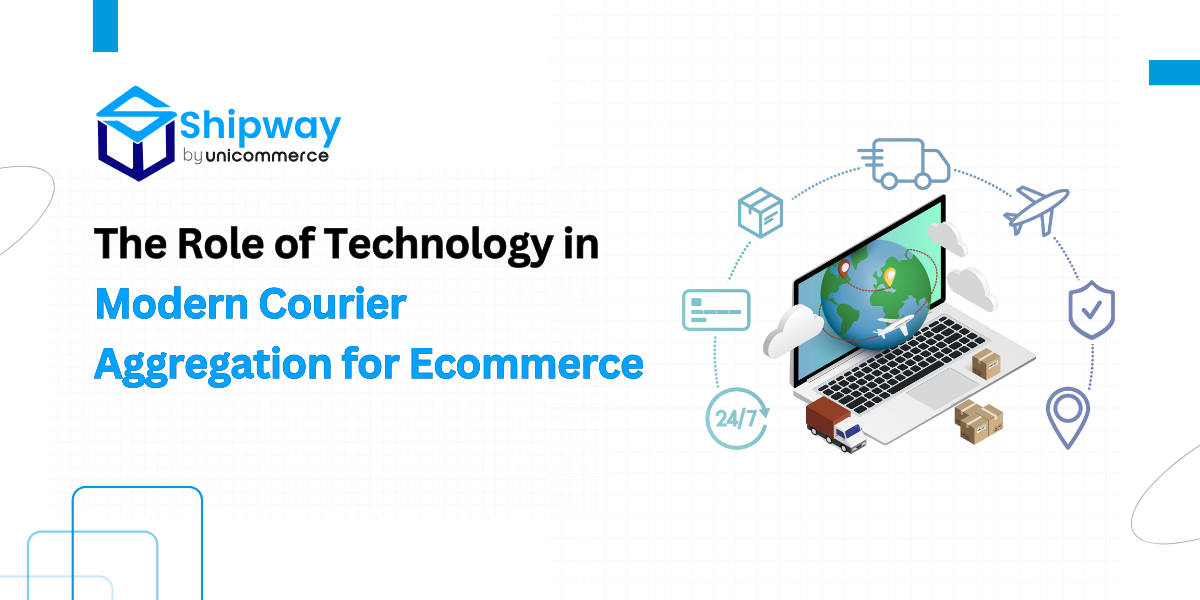E-commerce logistics has seen remarkable advancements over the last few years due to technological innovations and marketplace platforms for managing operations. With increasing customers’ expectations, businesses can no longer depend on traditional methods like manual shipping processes. As per today’s demand, fast deliveries have become a significant part of the post-purchase experience and technology is now at the core of making that happen.
One area that has seen transformation is courier aggregation. Traditionally, sellers worked with fixed courier partners, handled allocations manually, and tracked shipments across multiple portals. But this approach quickly breaks down at scale, leading to delays and higher return rates
Yet, modern courier aggregation platforms are built to solve these challenges by implementing automation, AI, and real-time data. It allows sellers to integrate with multiple carriers, automate courier selection, track all shipments through a single dashboard, and make smarter decisions based on performance analytics. In this blog, we’ll explore how technology is revolutionizing the courier industry, enhancing delivery solutions to meet evolving customer demands and enabling a more seamless and efficient shipping process.
How Courier Aggregators Use Technology to Optimize Shipping
Courier aggregation is no longer just about giving sellers access to multiple courier options. Technology has transformed it into a data-driven process that actively improves how brands ship, track, and manage orders. Here’s how:
1. AI-Powered Courier Allocation
Rather than applying fixed rules like “Courier A for Metro” or “Courier B for COD,” modern platforms use AI and machine learning to analyze historical delivery data across pin codes, shipment weight, carrier performance, and customer type. Based on this, the system assigns the most reliable and cost-effective courier partners in real time, per order.
2. Rate Optimization Engines
Aggregator platforms integrate courier pricing APIs and auto-compare real-time shipping rates based on serviceability, delivery type (COD/prepaid), and SLA commitment. This allows brands to find the most economical partner without compromising on quality.
3. Unified Shipment Tracking & Visibility
Instead of logging into multiple courier dashboards, brands get a single tracking view—powered by real-time data aggregation. Some platforms also offer branded tracking pages and proactive delivery alerts via WhatsApp, SMS, or email.
4. Smart NDR & Returns Handling
When a delivery fails, aggregators use rule-based NDR management workflows to automate follow-ups, trigger re-attempts, or initiate returns- all integrated with the brand’s order system. Some platforms even detect fraud-prone pin codes or risky COD buyers in advance.
5. Performance Analytics & SLA Monitoring
Most platforms now provide dashboards showing courier-wise performance, delays, success rate, RTO %, average delivery TAT, and more. Brands can use these insights to renegotiate contracts, exclude underperforming partners, or switch couriers dynamically.
6. Seamless API Integrations for Automation
Modern courier aggregators offer plug-and-play integrations with popular OMS, WMS, and e-commerce platforms (like Shopify, Magento, WooCommerce). This enables automated order sync, label generation, pickup requests, and status updates without toggling between tools. performance, delivery TAT, RTO %, and service reliability. Data-driven decisions help optimize shipping routes, choose cost-effective carriers, and minimize failed deliveries, ultimately improving profitability and customer satisfaction.
The Business Impact of Modern Courier Aggregation
In modern courier aggregation, by integrating multiple carriers through a single technology platform, businesses achieve greater operational efficiency, cost savings, and an enhanced customer experience.
1. Reduced Logistics Costs
Courier aggregation platforms compare rates from multiple carriers in real-time, enabling businesses to select the most cost-effective option for each shipment. This not only lowers shipping expenses but also eliminates the need for multiple vendor contracts and manual negotiations.
2. Improved Delivery Speed and Efficiency
With access to a wide network of carriers, businesses can dynamically allocate shipments based on location, capacity, and service quality. This ensures faster last-mile delivery, especially during peak seasons, without straining resources.
3. Data-Driven Decision Making
Modern courier aggregators provide actionable insights through analytics dashboards, tracking delivery performance, identifying bottlenecks, and optimizing shipping strategies based on historical data.
4. Enhanced Customer Experience
By leveraging features like real-time tracking, accurate ETAs, and automated updates, businesses can reduce delivery anxiety and build stronger customer trust, resulting in higher retention rates and repeat purchases.
5. Scalability for Business Growth
Whether it’s expanding to new markets or managing sudden order spikes, courier aggregation platforms offer scalability without requiring additional infrastructure investments.
Challenges in Implementing Advanced Logistics Technology for E-commerce
E-commerce businesses rely on advanced logistics technology to handle faster deliveries and growing order volumes. But adopting these solutions isn’t straightforward; integrating with existing systems, managing costs, and maintaining accurate data are major challenges.
1. High Setup and Integration Costs
Implementing AI-driven courier aggregation, warehouse automation, or real-time tracking tools involves significant upfront investment. For growing e-commerce brands operating on tight margins, these costs can delay or limit adoption.
2. Compatibility with Existing Systems
Many online retailers use legacy platforms for inventory, order management, or ERP. Integrating modern logistics software with these systems can be complex, leading to downtime, errors, or increased operational costs during the transition.
3. Managing Data Complexity Across Channels
E-commerce businesses operate across multiple marketplaces, D2C websites, and international channels. Synchronizing accurate data inventory, orders, and shipment tracking across all platforms remains a major challenge that impacts fulfillment accuracy.
4. Cybersecurity and Compliance Concerns
With sensitive customer data (addresses, payment details) flowing through logistics networks, e-commerce brands face growing risks of data breaches. Ensuring compliance with regulations like GDPR and maintaining data security is an ongoing struggle.
5. Workforce Readiness and Operational Change
Adopting new technology often requires training teams, redesigning processes, and overcoming resistance to change. For e-commerce operations under constant pressure to deliver faster, this transformation can be disruptive if not managed well.
Best Practices for E-Commerce Businesses
To fully leverage modern courier aggregation technology, e-commerce businesses need to adopt a strategic approach. Here are some best practices to ensure seamless operations, cost efficiency, and enhanced customer satisfaction:
1. Choose the Right Courier Aggregation Platform
Not all platforms are built the same. Look for solutions that offer AI-powered courier allocation, real-time tracking, and robust API integrations. Platforms that support multiple carriers, marketplaces, and delivery types (COD, prepaid, same-day, next-day) ensure maximum flexibility and operational efficiency.
2. Integrate Seamlessly with Existing Systems
Modern courier aggregators provide plug-and-play integrations with OMS, WMS, and e-commerce platforms. Ensuring smooth integration with your existing tech stack prevents operational bottlenecks, reduces errors, and automates order sync, label generation, and pickup requests.
3. Leverage Data for Smarter Shipping Decisions
Use analytics dashboards to monitor courier performance, delivery TAT, RTO %, and service reliability. Data-driven decisions help optimize shipping routes, choose cost-effective carriers, and minimize failed deliveries, ultimately improving profitability and customer satisfaction.
4. Implement Automated Returns & NDR Management
Returns are an inevitable part of e-commerce. Platforms that automate NDR workflows and manage returns efficiently reduce manual intervention, save time, and maintain a smooth post-purchase experience for customers.
5. Focus on Customer Communication
Enhance the customer experience by providing real-time updates via SMS, email, or WhatsApp. Accurate ETAs, proactive notifications about delays or failed deliveries, and branded tracking pages build trust and reduce post-purchase anxiety.
6. Plan for Scalability
Select a courier aggregation solution that can scale with your business. Whether expanding to new markets or handling peak-season order spikes, a scalable platform allows you to manage increased volume without adding infrastructure or manual overhead.
How Shipway’s Courier Aggregation Streamlines Ecommerce Logistics
Shipway goes beyond basic courier aggregation by offering a suite of powerful add-ons designed to streamline every aspect of e-commerce logistics. With seamless channel integrations, brands can connect with 50+ marketplaces and platforms, making day-to-day workflows efficient and familiar.
Its shipping intelligence and auto-pilot features automate order assignments, improving delivery percentages and freeing teams to focus on core business tasks. Orders and shipment statuses are auto-synced and pushed back to Shopify or other sales channels, ensuring real-time visibility without manual effort.
For high-volume sellers, Shipway supports bulk shipping label creation and automatic invoice and manifest generation, dramatically reducing operational time and errors. Additionally, unified NDR management helps minimize failed deliveries and reduce RTOs by centralizing follow-ups and reattempts, giving brands complete control over the post-purchase journey.
Conclusion
Efficient logistics is now a cornerstone of successful e-commerce, shaping both customer satisfaction and business growth. Modern courier aggregation platforms like Shipway move beyond traditional shipping methods, leveraging automation, AI, and real-time data to optimize deliveries, manage returns, and scale operations seamlessly. By integrating multiple carriers, automating courier allocation, and providing unified tracking and NDR management, Shipway empowers brands to deliver faster, smarter, and more reliable post-purchase experiences.
Adopting such technology not only addresses common challenges like high logistics costs, complex multi-channel data, and manual workflows but also positions e-commerce businesses for long-term growth. With best practices in place, businesses can harness these tools to reduce operational friction, improve decision-making, and enhance customer trust.


